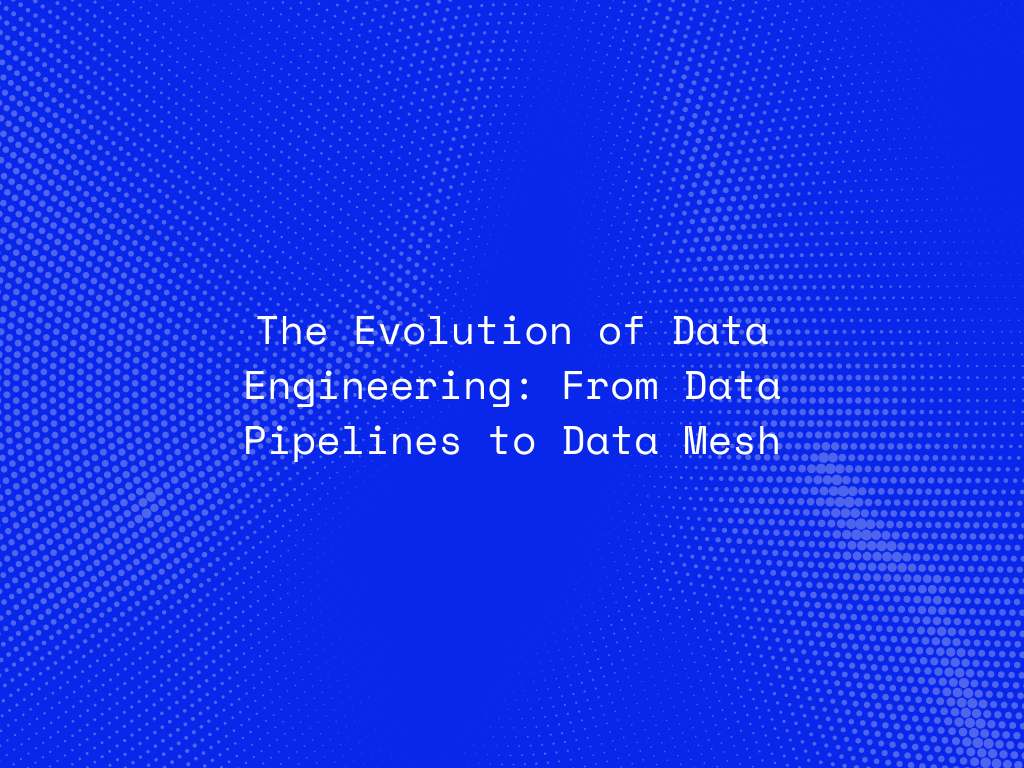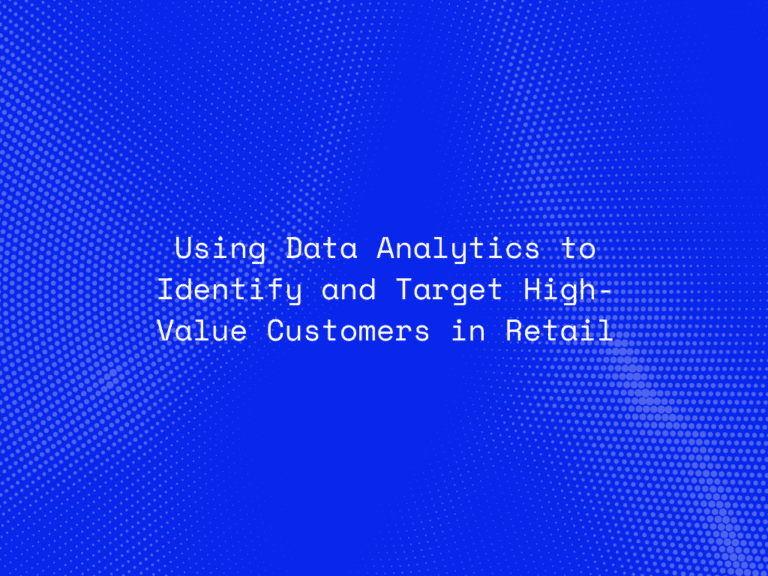The field of Data Engineering has evolved significantly over the past few decades. From the early days of simple data pipelines to the more recent concept of data mesh, the approaches to managing and utilizing data have continuously advanced to meet the growing demands of modern enterprises. This blog explores the evolution of data engineering, highlighting the key developments and how they have shaped the current landscape of data management.
The Early Days: Traditional Data Pipelines
In the early stages of data engineering, the primary focus was on building data pipelines. These pipelines were designed to move data from one place to another, typically from operational databases to data warehouses where it could be analyzed.
Key Characteristics:
- ETL Processes: Traditional data pipelines relied heavily on Extract, Transform, Load (ETL) processes. Data was extracted from various sources, transformed to fit the desired format, and then loaded into a data warehouse.
- Batch Processing: Data pipelines primarily used batch processing, which involved processing data in large chunks at scheduled intervals.
- Centralized Data Warehouses: The goal was to centralize data in a single repository, where it could be accessed for reporting and analysis.
The Rise of Big Data
With the advent of big data, the volume, variety, and velocity of data increased exponentially. Traditional data pipelines and data warehouses struggled to keep up with these new demands, leading to the development of more advanced data processing frameworks.
Key Developments:
- Hadoop and MapReduce: Technologies like Hadoop and MapReduce enabled the processing of large datasets distributed across multiple servers, facilitating the handling of big data.
- NoSQL Databases: To manage diverse and unstructured data, NoSQL databases like MongoDB and Cassandra emerged, offering more flexible data models compared to traditional relational databases.
- Real-Time Data Processing: The need for real-time insights led to the development of stream processing frameworks like Apache Kafka and Apache Flink, enabling continuous data processing.
Connect With Us
The Modern Data Stack
The modern data stack represents a significant shift in data engineering, emphasizing scalability, flexibility, and speed. This period saw the rise of cloud-based data solutions and advanced data analytics tools.
Key Components:
- Cloud Data Warehouses: Platforms like Amazon Redshift, Google BigQuery, and Snowflake offer scalable, managed data warehousing solutions that can handle large volumes of data with high performance.
- Data Lakes: Data lakes, such as those built on Amazon S3 or Azure Data Lake Storage, allow organizations to store raw, unstructured data at scale, making it accessible for various analytical purposes.
- ETL to ELT: The shift from ETL to Extract, Load, Transform (ELT) processes enables raw data to be loaded into a data warehouse or lake and transformed later, leveraging the compute power of modern data platforms.
- Data Integration Tools: Tools like Apache Airflow, dbt (data build tool), and Fivetran facilitate data orchestration, transformation, and integration, streamlining the creation and management of data pipelines.
The Emergence of Data Mesh
The latest evolution in data engineering is the concept of data mesh, which addresses the challenges of scaling data management in large, complex organizations. Data mesh promotes a decentralized approach, treating data as a product and empowering domain teams to manage their own data.
Core Principles:
- Domain-Oriented Decentralization: Data mesh advocates for organizing data ownership around business domains, with each domain team responsible for their own data products.
- Data as a Product: Each domain’s data is treated as a product, with clear ownership, defined interfaces, and service-level agreements (SLAs) to ensure data quality and reliability.
- Self-Serve Data Infrastructure: A self-serve data infrastructure provides domain teams with the tools and platforms they need to manage their data autonomously, reducing dependencies on centralized data teams.
- Federated Computational Governance: Governance is implemented in a federated manner, ensuring consistency and compliance across domains while allowing for flexibility and autonomy.
Benefits of Data Mesh
The data mesh approach offers several advantages for modern enterprises:
- Scalability: By decentralizing data management, organizations can scale their data infrastructure more effectively, avoiding bottlenecks associated with centralized systems.
- Agility: Domain teams can move faster and innovate more freely, as they have control over their own data products and infrastructure.
- Improved Data Quality: Clear ownership and accountability for data products lead to higher data quality and reliability.
- Enhanced Collaboration: Data mesh fosters better collaboration between data producers and consumers, aligning data initiatives more closely with business needs.
Conclusion
The evolution of data engineering from traditional data pipelines to the modern concept of data mesh reflects the changing needs and complexities of managing data in today’s digital age. As organizations continue to generate and rely on vast amounts of data, adopting advanced data engineering practices and embracing innovative approaches like data mesh will be crucial for staying competitive and unlocking the full potential of data. By leveraging the latest technologies and methodologies, businesses can create scalable, efficient, and agile data infrastructures that drive better decision-making and foster continuous innovation.




